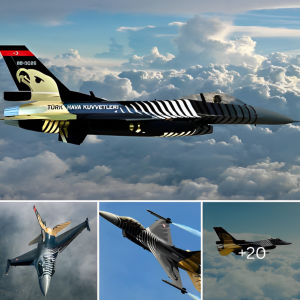The Bell X-1 was a marvel of aeronautical engineering. The fuselage was shaped like a 0.50 calibre Browning machine gun bullet, which was known to be stable at supersonic speeds.
The Bell X-1 was the first aircraft to break the “sound barrier” or fly faster than the speed of sound. This rocketpowered plane built by Bell Aircraft of the United States first flew on January 19, 1946, and changed aviation history in numerous ways. It established the concept of pure research aircraft – those built solely for experimental purposes and unconstrained by military or commercial requirements. In October 1947, Captain Charles “Chuck” Yeager flying the X-1 reached a speed of Mach 1.06 thus becoming the first person to fly supersonic. Yeager’s flight was possibly the most important since Orville Wright piloting the Wright Flyer made the world’s first controlled, sustained flight of a powered, heavier-than-air aircraft in 1903. Realising the military significance of Yeager’s achievement, the US Air Force (USAF) designated his flight and its data as Top Secret. It was officially confirmed only in March 1948. In 1950, USAF Chief of Staff Hoyt Vandenberg said the flight had “marked the end of the first great period of the air age, and the beginning of the second. In a few moments, the subsonic period became history, and the supersonic period was born.”
The Bell X-1 was a marvel of aeronautical engineering. The fuselage was shaped like a 0.50 calibre Browning machine gun bullet, which was known to be stable at supersonic speeds. The wings were straight and relatively thin. Scores of Bell engineers and mechanics, ground crew and pilots, toiled for months to challenge the limits of high-speed and high-altitude flight. In its final form, the X-1 had a fuselage chock-a-block with two liquid propellant tanks, twelve nitrogen spheres for fuel and cabin pressurisation, the pilot’s pressurised cockpit, three pressure regulators, a retractable landing gear, the wing carry-through structure, and more than 225 kg of special flight-test instrumentation. It was powered by a single Reaction Motors RMI LR-8-RM-5 rocket, rated at 6,000 lbf (27 kN), which could run just four minutes and 45 seconds.
The Bell X-1 was originally designed to take off from a runway. But since its sole purpose was to cross Mach 1, it was decided to lift it to high altitude using another plane before releasing it. And a heavily modified B-29 Superfortress was the only aircraft then capable of carrying a fully fuelled X-1. A retractable ladder allowed the pilot to descend from the B-29 and enter the tiny starboard hatch of the X-1. It would be airlaunched from the B-29 at an altitude of 23,000 to 25,000 feet, and then fire its rocket engine to climb to its test altitude.
The X-1’s first glide flight was on January 19, 1946, by Bell test pilot Jack Woolams. Woolams made 10 glide flights to test the plane’s handling characteristics before installation of the rocket engine. In early 1946, the Bell X-1 project was moved to Muroc Army Air Field in California’s Mojave Desert. The site had a crucial advantage – the nearby Rogers Dry Lake offered 170 square kilometres of flat natural runways and plenty of space for emergency landings. Bell test pilot Chalmers Goodlin made the first glide flight in the powered X-1 on October 11, 1946. After a total of four glide flights, he made the first powered flight on December 9, reaching a speed of Mach 0.79.
Chuck Yeager was chosen as the pilot to attempt to breach the sound barrier. After a few glide flights in early August 1947, he made his first powered flight in the X-1 on August 29, reaching Mach 0.85. But during a test flight in early October, Chuck Yeager completely lost elevator effectiveness at 0.92 Mach due to compressibility effects. It was a serious setback. However, a brilliant engineer named Dick Frost proposed a simple modification – a vertical worm gear that would permit the pilot to operate the horizontal stabilizer in flight. On the next flight, as Yeager approached 0.92 Mach, the shock waves again hit the elevator, depriving him of pitch control. All he had to do was set the stabilizer to two degrees down to regain control. And at 0.94 Mach the buffeting stopped.
On October 14, 1947, Yeager broke the sound barrier while flying a Bell X-1 named “Glamorous Glennis” in honour of his wife. He reached a speed of Mach 1.06 (807 mph, 1,299 km/h) at 43,000 feet. The X-1 continued flight testing until mid-1950, by which time it had completed a total of 78 flights – 19 contractor demonstration flights and 59 USAF test flights. On March 26, 1948, with Yeager at the controls, another X-1 variant attained a speed of Mach 1.45 (957 mph, 1,540 km/h), at an altitude of 71,900 feet. This was the highest speed and altitude reached by a crewed aircraft till then. In November 1958, the Bell X-1 programme was brought to a close after thirteen years of record-setting flights.





